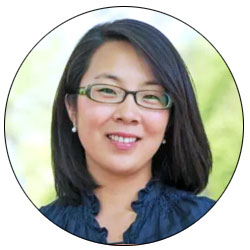
National Academy of Medicine Issues Code of Conduct to Guide Health Care’s AI Revolution
One of the Authors, Penn’s Kevin B. Johnson, Explains the Principles It Sets Out
News
Cross-posted with permission from Knowledge@Wharton

More than a half-million health care workers in the U.S. have quit their jobs in recent months, driven to the breaking point by the COVID-19 pandemic. But greater use of technology could help save jobs by reducing the kinds of inefficiency and stress that lead to burnout for many hospital doctors and nurses.
“When we think about digital transformation and leveraging that digital technology, we tend to think about how it can help on the clinical side [with] things like precision medicine or using AI to detect signs of cancer,” said LDI Senior Fellow Hummy Song, PhD, MPP, a Wharton Professor of Operations, Information and Decisions. “But there’s a real opportunity in using these tools to make big improvements on the operational side.

Song co-authored an article that was published last month in Harvard Business Review about the promise of digital transformation to revolutionize hospital administration. While technology is ubiquitous across health care facilities, she said, few are harnessing it to make the most out of their precious and finite resources — both physical and human.
Song joined Wharton Business Daily on SiriusXM to talk about the article and four specific areas where digital transformation can help improve working conditions for employees, which can lead to better outcomes for patients (Listen to a the podcast of the show).
Managing patients is an unrelenting task for hospitals. When a sick person arrives at the door, it triggers a number of quick decisions: Does the person need to be admitted? If so, to what unit? Is a bed available in that unit? If not, when will it be available? Or should the patient be directed to another facility?
Predictive tools build on past information to estimate the number of admissions, wait times, transfers, discharges, and other data points. Even external trends, such as COVID-19 variant-related spikes in admission, can be factored into the systems to help staffers make better, more accurate decisions.
“Patient flow is a really great example of how machine learning or algorithms can be helpful,” Song said. “There are so many moving parts, all of them are interconnected, and that just makes it really challenging to figure out what’s the best course of action.”
Song said algorithms are excellent at modeling and predicting absenteeism, which has been a critical issue during the pandemic. Deploying systems that combine absentee rates with patient flow data can give hospitals a good sense of how to staff any given unit on any given day.
Traditionally, when someone calls out sick, there’s a mad scramble to fill a shift. Such chaos is “really problematic, especially when you start look at the research on what happens when you have inconsistent and unpredictable schedules,” Song said. “It turns out that’s a big reason driving nurses to quit their jobs.”
Staffing challenges certainly aren’t confined to health care. The lessons can be applied to retail, restaurant, and other sectors of the economy, Song said.
Scheduling is another Herculean task for hospitals because of the complexity. If a patient needs surgery, for example, which operating room is available and at what time of day? Is all the equipment at the ready?
“A big challenge that a lot of hospitals face is trying to predict accurately how long each surgical procedure is going to take, because that has direct implications for which surgeries are going to get done that day, how many, and in what order,” Song said.
There’s also the surgical team to consider. Research has shown that the surgeon’s workload, the surgical team’s experience, and the sequence of the operation all affect the amount of time spent in the OR. A surgery that goes into overtime on one patient may affect the quality of care for the next.
“It’s much easier for algorithms to account for those factors, rather than having a human do it,” Song said. “You can use these tools that can help with optimizing this kind of scheduling of these resources, which in turn will help reduce your downstream delays.”
American hospitals spent an average $11.9 million each on medical and surgical supplies in 2018, an amount that is up to one-third of operating expenses. With so much money on the line, it’s clear that tracking inventory down to the last box of latex gloves should be a top priority.
“A shocking amount of hospital inventory management is actually still done manually,” Song said. “There’s a lot of low-hanging fruit in just automating this and centralizing the information, so it’s easier to track and order your supplies.”
Digital systems also help hospitals coordinate supplies across departments and react more resiliently to changes in the global supply chain, she said.
In the HBR article, Song and her co-author, Song-Hee Kim from Seoul National University, offer three “prescriptions” for hospitals that want to be more intentional with their information technology. First, collect the right data in the right format. Second, design data systems for scalability and interoperability. And third, don’t lose sight of the human-algorithm interaction because the ultimate decision-makers are people.
“This is not only something that can lead to big ROI for hospitals financially, but perhaps even more important is that it’s a meaningful step forward for patients in terms of improving the quality and efficiency of care,” Song said. “When we have a more efficient system, it means improving the access of more patients to utilize the system.”

One of the Authors, Penn’s Kevin B. Johnson, Explains the Principles It Sets Out

More Focused and Comprehensive Large Language Model Chatbots Envisioned

2025 Penn Nudges in Health Care Symposium Focuses on the Human-Machine Interface

This Social Media Tool to Fight HIV Could Be Scaled up to Help Local Health Officials, LDI Experts Say

A Novel Study Shows That Large Language Models Act Like Medical Devices in Clinical Care Scenarios

A Penn Lab Takes a New Approach to Unpacking the Doctor-Patient Encounter